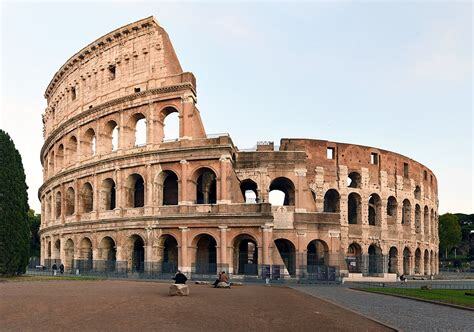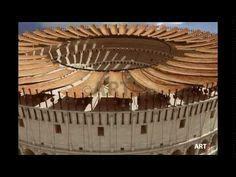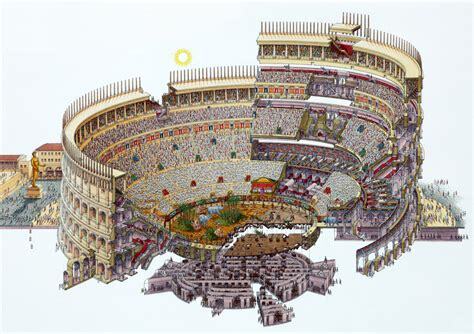Construction in Transition – The Coliseum

Lecture 7: Construction in Transition – the Coliseum
Understanding Greek and Roman Technology: From the Catapult to the Pantheon
Dr Stephen Ressler (2013)
Film Review
According to Ressler, the Roman building boom in the first century AD led to the most remarkable period of construction engineering in history.
Known at the time as the Flavian amphitheater, the Coliseum was built under three successive Flavian emperors starting with Vespasian in 75 AD. It was completed by his son Titus, who held the inaugural games in 80 AD. His successor Domitian (81-96 AD) added a two-story underground network of corridors, which were used as as holding area for wild animals and gladiators.
Sixteen stories high, the Coliseum was unprecedented in size. Accommodating 55,000 spectators, its floor was the size of a modern football field. Its tiered structure segregated attendees according to social class. The highest tier provided wooden bleachers for women and slaves.
The foundation, made of concrete, was 40 feet deep, with the exterior walls held together by iron clamps (300 tons of them) and supported by arches. The inner walls were concrete with brick facing. The vaults serving as entrance ways were made of poured concrete.
Geometrically, the Coliseum was an oval filled with concentrically circular interior walls. Radial corridors covered by concrete vaults connected the outer arcades to the interior hallways to facilitate crowd access.
At lower levels, the outer walls were made of alternating (imported) marble and tufa blocks lifted into place with wooden cranes. The upper stories had mainly concrete walls because they were difficult to access with cranes.
Marble seating was added to the completed structure, as was a canvas awning (valarium) that weighed 150,000 pounds and which Roman sailors deployed was deployed from wooden poles.

The schematic diagrams Ressler uses to highlight the stepwise fashion in which the Coliseum was constructed are superb in conveying the genius of the engineers who designed this 2,000 year old monument.

Film can be viewed free with a library card on Kanopy.
The Most Revolutionary Act
- Stuart Jeanne Bramhall's profile
- 11 followers



